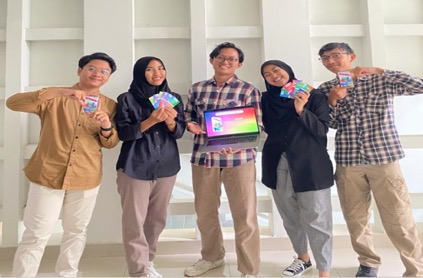
At the high school level, chemistry is often considered difficult and less attractive to students.
Even when teachers explain the material, students tend to have trouble understanding chemistry lessons. One reason for this difficulty is the monotonous teaching methods.
Recognizing the challenges students and teachers face in the learning process, five students from Universitas Gadjah Mada (UGM) initiated efforts to develop an organic chemistry learning tool using domino cards, supported by augmented reality technology and voiceovers.
The five students are Erina Aisyah A.H. (Mathematic and Natural Sciences), Widuri A. (Mathematic and Natural Sciences), Adyatma Bhagaskara (Mathematic and Natural Sciences), Sigit Bayu (Vocational College), and Faturrahman (Geography).
The tool is SOSwiD, which stands for Studying Organic Synthesis with Domino Cards. It is aimed at helping students who are less interested in chemistry subjects, especially organic chemistry, learn more engagingly and enjoyably.
“Through this innovative chemistry learning, high school and college students are expected to become more motivated to learn,” said Adyatma Bhagaskara on Thursday (October 19).
Bhagaskara explained that SOSwiD cards are designed using augmented reality (AR) technology, which allows for the three-dimensional visualization of reaction outcomes.
These cards are also equipped with voiceover features that become active when the two cards are combined.
Through AR, this innovation has several advantages, including its effectiveness in enhancing conceptual understanding and broad applicability in various media.
Voiceover (VO) also has its benefits, such as practicality, improved ease of understanding, and user-friendliness for individuals with disabilities, as it provides an audio and three-dimensional visual interpretation of compound mechanisms.
“The AR-equipped SOSwiD cards are beneficial for those who have difficulty visualizing three-dimensional compound structures, which allows them to view the structure from various angles,” added Sigit Bayu.
Moreover, SOSwiD cards are designed considering the senior high school curriculum for twelfth graders, the Basic Organic Chemistry course for science and technology students, and those in agriculture.
“These cards are expected to be an effective tool for students and learners to study organic chemistry. We hope that the perception of organic chemistry as difficult and frightening can change,” concluded Bayu.
Author: Gusti Grehenson

